One-of-a-kind getaway to Wisconsin whole house rentals for every season.
Best of Ski Cabin Rentals in Wisconsin
Best of Ski Cabin Rentals in Wisconsin
When it comes to ski cabin rentals, few states have a more robust collection than Wisconsin. This is due to the profound impact that this winter sport has had on the area. Unbeknownst to most Americans, during the 19th century, Wisconsin set the stage for a new era of skiing. Against all odds, European immigrants in the Midwest inspired major ski companies from Norway to relocate to America. This was a major development, and it all was sparked by one simple innovation. To truly understand the impact this had on both the local and national economy, diving into the origin of skiing is essential. This is an interesting proposition since it takes readers on a surprisingly intricate journey throughout human history. This will inspire you to stay over at House of Cool, truly the best of ski cabin rentals you can find in Wisconsin!
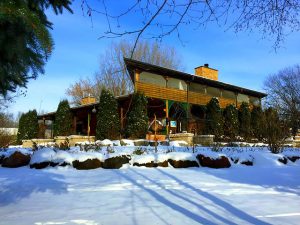
Adeline’s House of Cool is simply the best ski cabin rental in Wisconsin! Stay over & enjoy your favorite winter sport!
Origin of Skiing—simple innovation story
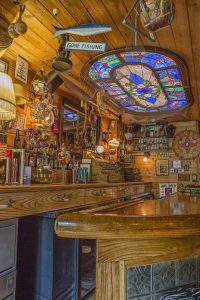
A custom bar, cozy, and warmth to accommodate you once you’re done skiing!
Out of all the traditions that became sports, none have made a more impressive transition than skiing. The United States is home to over 6.9 million skiers, and this translates to big business. Between lodging and direct revenue, skiing contributes $20 billion to America’s economy. Despite being viewed exclusively as a leisure activity today, the origins of skiing revolved entirely around survival. The first uses of skis were for hunting and eventually evolved into a crucial method of transportation. Evidence of various forms of skiing have been found around the world, and this international industry couldn’t escape being influenced by Wisconsin.
Skiing is a tradition that transcends cultures and is firmly embedded throughout early human history. The oldest archaeological signs of skiing are 5,000-year-old paintings in China & artifacts from 6300 BCE in Northern Russia. Rock carvings depicting skis date back to 4000 BCE in Scandinavia, and these simple tools became essential to surviving in the area. Skis were used by Scandinavian farmers, hunters and soldiers throughout the Middle Ages and eventually attained central roles of military operations. By the 18th century, special units of Swedish soldiers trained and fought exclusively on skis.
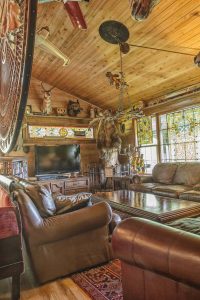
cabin rental to relax in after skiing outdoors!
This effective method of traversing snowy terrain was quickly brought to the New World. Settlers desperately needed ways to advance their caravans during North America’s drastic winters, so skiing became unlikely salvation. At the time, the main innovations were coming from Europe. This was the birthplace of the cambered ski, so the industry revolved around Scandinavian production hubs. Nothing lasts forever, since this monopoly was completely uprooted after the introduction of hickory skis.
Up until the late 19th century, all of the high-quality skis in Europe utilized a type of strong yet springy ash wood. As modern carbon steel tools were incorporated in ski production, they opened the doors to the utilization of different materials. In 1882, a Norwegian company made the first pair of hickory skis. This was a game-changer, since this harder wood was able to be shaped into thinner skis without sacrificing their durability. The flexibility and sheer toughness of hickory skis were unmatched, so they quickly exploded in popularity amongst the skiing elite.
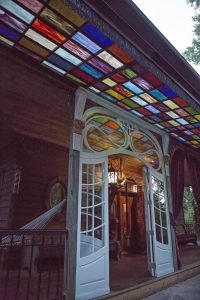 Hickory wasn’t native to Europe, so Norwegian ski producers were forced to set their sights on America. This coveted wood was being heavily exported from Louisiana, but the long journey across the ocean made it a luxury item. Cutting down the cost was essential for hickory skis to become an industry standard, and this inconvenient truth led to a groundbreaking development. Intrigued by the possibilities, Norwegian immigrants in Wisconsin started producing hickory skis. They had easy access to Louisiana’s lumber stocks, which allowed them to operate at a fraction of the cost as their countrymen in Europe.
Hickory wasn’t native to Europe, so Norwegian ski producers were forced to set their sights on America. This coveted wood was being heavily exported from Louisiana, but the long journey across the ocean made it a luxury item. Cutting down the cost was essential for hickory skis to become an industry standard, and this inconvenient truth led to a groundbreaking development. Intrigued by the possibilities, Norwegian immigrants in Wisconsin started producing hickory skis. They had easy access to Louisiana’s lumber stocks, which allowed them to operate at a fraction of the cost as their countrymen in Europe.
Producers in Norway couldn’t compete, which lead to major corporate migration. By 1887, a majority of Norwegian ski-makers had relocated their companies to the U.S. This set the stage for a huge shift in the market since skiing gradually became heavily integrated into the local culture. In 1861, the first use of recreational skis was documented in Beloit, Wisconsin. This new winter sport quickly gained popularity throughout the Midwest and set the stage for America’s booming ski industry.
Resulting in high demands for ski cabin rentals in Wisconsin
Being the birthplace of recreational skiing has its perks, especially since Wisconsin is home to so many areas to ski. It’s currently a top American destination for skiers, and the demand for ski cabin rentals in Wisconsin is resounding. Due to the new wave of overdeveloped resorts, most rentals fail to provide what visitors are looking for. Most new resorts are just as inundated in rules as they are in predictable décor. To give our readers a welcome break from the norm, we are highlighting the best ski cabin rental in Wisconsin. This cabin boasts all the advantages resorts can’t provide, so indulge in something unique on your next vacation!
Top of Ski Cabin Rentals in Wisconsin
Adeline’s House of Cool – When it comes to treating your family to the best aspects of Wisconsin’s ski industry, this 6-bedroom cabin can’t be beaten. It’s nestled on the banks of Lake Puckaway, and the neighboring forest is filled with cross-country skiing options. Even though staying in the area is tempting, visitors also have access to the major hotspots. Adeline’s is a short drive from Wisconsin Dells and the ski resorts around Madison, so stay in this strategic location to take advantage of everything Wisconsin’s ski industry as to offer!
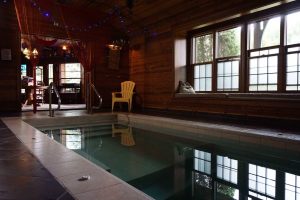
If you like to ski, we’re sure you will enjoy this 20ft. Hot Tub to relax in afterwards!
CHECK OUT OUR AMENITIES PAGE, OR 3D VIRTUAL TOUR!
Adeline’s House of Cool is located in Green Lake County Wisconsin near the Wisconsin communities of Marquette, Markesan, Kingston, Dalton, Endeavor, Montello, Princeton, and Green Lake.
Member of the
Markesan Chamber of Commerce
Green Lake Chamber of Commerce
Princeton Chamber of Commerce
